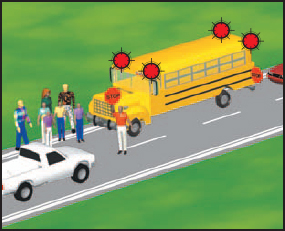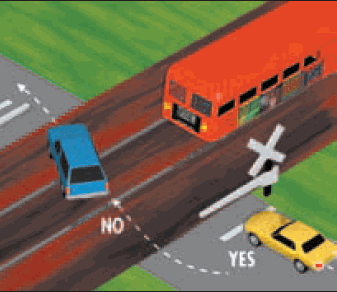Speeding tickets are the most common type of traffic violation in California. Here are some updated speed limit laws in California for 2023.
Speed Limits In California
California has a “Basic Speed Law.” This law means that you may never drive faster than is safe for current conditions. For example, if you are driving 45 mph in a 55 mph speed zone during a dense fog, you could be cited for driving “too fast for conditions.”
Regardless of the posted speed limit, your speed should depend on:
- The number and speed of other vehicles on the road.
- Whether the road surface is smooth, rough, graveled, wet, dry, wide, or narrow.
- Bicyclists or pedestrians walking on the road’s edge or crossing the street.
- Whether it is raining, foggy, snowing, windy, or dusty.
Maximum Speed Limit In California
The maximum speed limit on most California highways is 65 mph. You may drive 70 mph where posted. Unless otherwise posted, the maximum speed limit is 55 mph on two-lane undivided highways and for vehicles towing trailers.
Other speed limit signs are posted for the type of roads and traffic in each area. All speed limits are based on ideal driving conditions. Construction zones usually have reduced speed zones.
High speed increases your stopping distance. The faster you go, the less time you have to avoid a hazard or collision. The force of a 60 mph crash is not just twice as great as a 30 mph crash; it’s four times as great!
Reduced Speeds
Below are some reasons you’ll need to reduce your speed below the posted speed limit.
Heavy Traffic or Bad Weather
You must drive slower when there is heavy traffic or bad weather. However, if you block the normal and reasonable movement of traffic by driving too slowly, you may be given a ticket. If you choose to drive slower than other traffic, do not drive in the “Number 1 lane” (the fast lane) (refer to “Choosing a Lane”). When traveling below the speed limit and another driver is close behind you and wishes to drive faster, always move to the right.
Towing Vehicles, Buses, or Large Trucks
When you tow a vehicle or trailer, or drive a bus or three or more axle truck, you must drive in the right hand lane or in a lane specially marked for slower vehicles. If no lanes are marked and there are four lanes or more in your direction, you may only drive in either of the two lanes closest to the right edge of the road.
Driving Around Children
When driving within 500 to 1,000 feet of a school while children are outside or crossing the street, the speed limit is 25 mph unless otherwise posted. Also, if the school grounds have no fence and children are outside, never drive faster than 25 mph. Some school zones may have speed limits as low as 15 mph. Always drive more carefully near schools, playgrounds, parks, and residential areas because children may suddenly dart into the street. Also, many children have not yet developed the ability to judge speeds and distances well enough to cross streets safely when cars are moving fast.
All vehicles must stop

Near schools, look for:
- Bicyclists and pedestrians.
- School safety patrols or school crossing guards. Be sure to obey their directions. For the crossing guard’s safety, allow him or her to safely get to the side of the road before driving ahead.
- Stopped school buses and children crossing the street. Some school buses flash yellow lights when preparing to stop to let children off the bus. The yellow flashing lights warn you to slow down and prepare to stop. When the bus flashes red lights (located at the top front and back of the bus), you must stop from either direction until the children are safely across the street and the lights stop flashing. The law requires you remain stopped as long as the red lights are flashing (CVC §22454). If you fail to stop, you may be fined up to $1,000 and your driving privilege could be suspended for one year. If the school bus is on the other side of a divided or multilane highway (two or more lanes in each direction), you do not need to stop.
California Speed Limit Laws For Blind Intersections
The speed limit for a blind intersection is 15 mph. An intersection is considered “blind” if there are no stop signs at any corner and you cannot see for 100 feet in either direction during the last 100 feet before crossing. Trees, bushes, buildings, or parked cars at intersections can block your view to the side. If your view is blocked, edge forward slowly until you can see.
Speed Limit Laws For Alleys In California
The speed limit in any alley is 15 mph.
Speed Limit Laws When Driving Near Near Railroad Tracks In California
The speed limit is 15 mph within 100 feet of a railroad crossing where you cannot see the tracks for 400 feet in both directions. You may drive faster than 15 mph if the crossing is controlled by gates, a warning signal, or a flag man.
At railroad or train crossings:

- Look in both directions and listen for trains. Many crossings have multiple tracks; so, be ready to stop before crossing, if necessary. Cross railroad tracks only at designated crossings and only when it is safe to do so.
- Expect a train on any track at any time traveling in either direction. If you need to stop after crossing the tracks, wait until you can completely cross the tracks before proceeding. Make sure your vehicle clears the tracks before you stop.
- Never stop on the railroad tracks. Remember that a train cannot stop quickly or swerve out of the way. If you are on the tracks, you risk injury or death.
- Watch for vehicles that must stop before they cross train tracks. These vehicles include buses, school buses, and trucks transporting hazardous loads.
- Remember that flashing red lights mean STOP! Stop at least 15 feet, but not more than 50 feet, from the nearest track when the crossing devices are active or a person warns you a train is coming. Stop if you see a train coming or you hear the whistle, horn, or bell of an approaching train.
- Do not go under lowering gates or around lowered gates. Flashing red lights indicate you must stop and wait. Do not proceed over the crossing until the red lights stop flashing, even if the gate rises. If the gates are lowered and you do not see a train approaching, call the posted railroad emergency toll-free number or 9-1-1. Be ready to give a detailed description of your location.
Light Rail Transit Vehicle Crossings
The same rules apply to light rail transit vehicle crossings as to train crossings. Do not proceed across the tracks until you can see clearly in both directions and are sure there are no light rail transit vehicles or trains coming. Do not go around or under any lowered gate.
NOTE: Light rail transit vehicles are very quiet and accelerate more quickly than freight trains.
Near Streetcars, Trolleys, or Buses
The passing speed limit, when safe to pass, is no more than 10 mph. This speed limit applies at a safety zone or an intersection where a streetcar, trolley, or bus is stopped and traffic is controlled by a peace officer or traffic signal. A safety zone is marked by raised buttons or markers on the road and is set aside for pedestrians. You will most often see safety zones in areas where street cars or trolleys and vehicles share the roadway.
California Speed Limit Laws For Business or Residence Districts
The speed limit is 25 mph, unless otherwise posted.
Speed Limit Laws For Driving Near Animals In California
If you see animals or livestock, slow down and follow directions from the person in charge of the animals. If you see a stray animal in your path, slow down or stop if it is safe.
